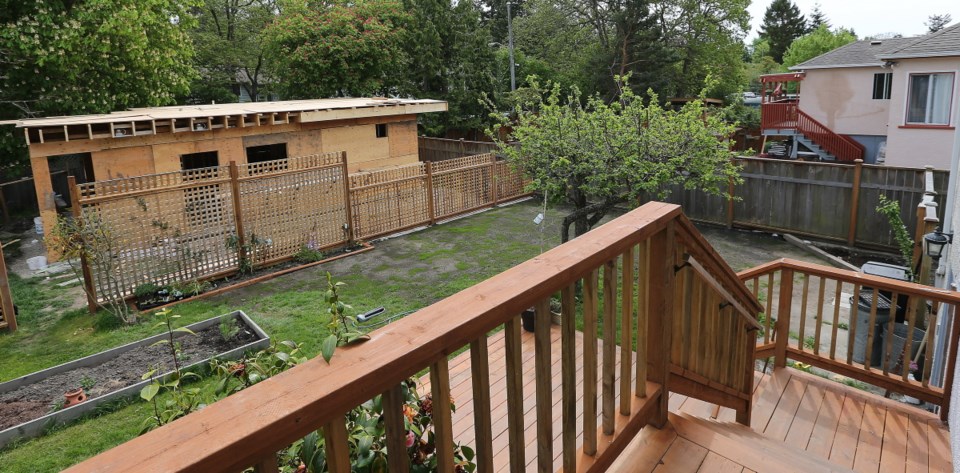Laneway houses are one of the hottest property trends in Vancouver these days. But the same can’t be said in Victoria, where homeowners have been slow to embrace garden suites.
Since Vancouver approved the creation of laneway houses in 2009, more than 1,000 permits have been issued.
But since Victoria began in 2011 permitting garden suites — small mortgage helpers often crafted out of converted garages or back yard sheds — only two have been built. One is under construction.
City staff in Victoria say there have been only 12 applications for garden suites, most of which came in the past year, since the policy was approved. One application was declined and one was withdrawn. Seven are in process.
Victoria Coun. Chris Coleman, like city staff, said the number of applications in Victoria will probably increase as garden suites become better known.
“When we adopted the trial period for secondary suites, which goes back to 2004 in the Gonzales area, the first 18 months or even 2 1/2 years, think they had nine applications,” Coleman said.
“Then people began to understand them and they took off a little better.”
Vancouver’s laneway houses — also known as granny flats, coach or carriage houses and “Fonzie suites” — also had a slow start. In the year they became legal, just 18 permits were approved. But the number grew quickly. In 2012, 350 permits were issued.
Victoria staff say from an examination of the small number of applications received, there’s nothing to indicate the policy should be changed and that more applications can probably be expected as the policy becomes better known.
Coleman described garden suites as “secondary suites outside the main building” — providing an opportunity for people who don’t have enough room within the footprint of their house to add a secondary suite separate from the house.
Mayor Dean Fortin noted that garden suites are not as easy to approve as secondary suites because of the potential impact on neighbours.
“Although it’s a very welcomed way to re-densify neighbourhoods, garden suites, because they are contained in outbuilding, have the potential to impact neighbours,” Fortin said.
“You can build a garage; you can build a storage shed and there’s no regulations about distance from your neighbours — you can built it right to your lot [line]. When it gets converted, all of a sudden people living there can invade [a neighbour’s] privacy.”
Because of that, Fortin said, the approval process for garden suites is more cumbersome, requiring council approval for each application.
“Council’s position was we want to see this move forward, but we want to do it in a cautious way,” he said
Victoria has been recognized as a leader in facilitating the creation of secondary suites. In 2011, it won a Federation of Canadian Municipalities sustainable community award for its policies allowing secondary suites in houses of any age without requiring additional parking and establishing a grant program that made up to $5,000 grants available to cover up to 25 per cent of the construction costs of new secondary suites.
Coleman thinks a similar grant program should be considered for garden suites as they require a significant capital investment.
“The reality is that garden suites, if they are new, cost somewhere between $45,000 and $85,000 to put in place,” he said.
“Secondary suites, which are inside the building, are substantially less than that but they’re still expensive — somewhere between $35,000 and $65,000.
“We need to figure out ways to introduce greater incentives.
“I would hope we could look at a similar grant program and match it up to some grants that might be available through CMHC [Canada Mortgage and Housing Corp.]. We’re not there yet, but I think there is an enormous opportunity.”
Fortin agreed that it’s worth considering, saying an incentive grant program “is a good way to stimulate the investment.”



